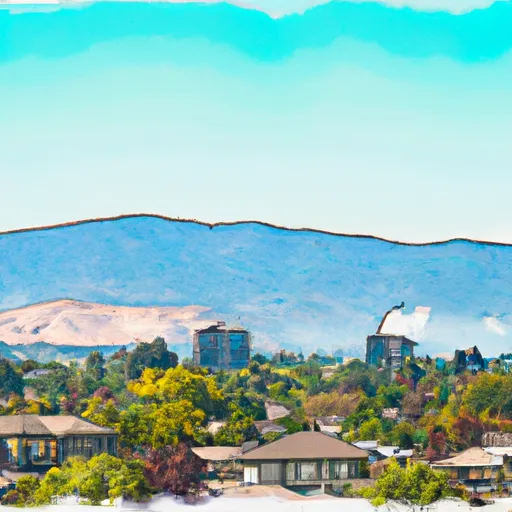-
 Snoflo Premium
Snoflo Premium
Get unlimited access to all our content
With no Ad interruptions! - Start Your Free Trial Login with existing account
Leona-Valley
Eden Index
Climate
8.7
•
Recreation
3.2
•
Community
3.5
•
Safeguard
5.5/10

Leona Valley is a small community located in northern Los Angeles County, California. Situated in the western Mojave Desert, the town experiences a semi-arid climate characterized by hot and dry summers, and cool winters. Summers can reach temperatures exceeding 100°F (38°C), while winters are mild with average temperatures around 50°F (10°C). The area receives very little rainfall, averaging around 12 inches (30 cm) per year, primarily occurring during winter months.
Hydrologically, Leona Valley is part of the California Water Project and primarily relies on imported water for residential and agricultural use. The community also benefits from groundwater resources from the area's aquifers. The valley is surrounded by the San Andreas Fault, which is responsible for its unique geological formations.
Outdoor recreation opportunities in Leona Valley are abundant. The nearby Angeles National Forest offers hiking and camping opportunities within a short drive from the community. The area is also known for its equestrian activities, with numerous trails and ranches catering to horseback riding enthusiasts. Leona Valley is famous for its annual Leona Valley Cherry Festival, celebrating the region's cherry harvest, where visitors can enjoy local food, live music, and various family-friendly activities.
What is the Eden Index?
The Snoflo Eden Index serves as a comprehensive rating system for regions, evaluating their desirability through a holistic assessment of climate health, outdoor recreation opportunities, and natural disaster risk, acknowledging the profound impact of these factors on livability and well-being.
Climate Health Indicator (CHI): 8.7
Leona-Valley receives approximately
222mm of rain per year,
with humidity levels near 72%
and air temperatures averaging around
17°C.
Leona-Valley has a plant hardyness factor of
8, meaning
plants and agriculture in this region tend to thrive here all year round.
By considering the ideal temperature range, reliable water supplies, clean air, and stable seasonal rain or snowpacks, the Climate Health Indicator (CHI) underscores the significance of a healthy climate as the foundation for quality living.
A healthy climate is paramount for ensuring a high quality of life and livability in a region, fostering both physical well-being and environmental harmony. This can be characterized by ideal temperatures, reliable access to water supplies, clean air, and consistent seasonal rain or snowpacks.
Weather Forecast
Streamflow Conditions
Northern Mojave
Area Rivers
Northern Mojave
Snowpack Depths
Northern Mojave
Reservoir Storage Capacity
Northern Mojave
Groundwater Levels
Recreational Opportunity Index (ROI): 3.2
The Recreational Opportunity Index (ROI) recognizes the value of outdoor recreational options, such as parks, hiking trails, camping sites, and fishing spots, while acknowledging that climate plays a pivotal role in ensuring the comfort and consistency of these experiences.
Access to outdoor recreational opportunities, encompassing activities such as parks, hiking, camping, and fishing, is crucial for overall well-being, and the climate plays a pivotal role in enabling and enhancing these experiences, ensuring that individuals can engage in nature-based activities comfortably and consistently.
Camping Areas
| Campground | Campsites | Reservations | Toilets | Showers | Elevation |
|---|---|---|---|---|---|
| Spunky | 10 | 3,191 ft | |||
| Mt. Pacifico | 9 | 7,092 ft | |||
| Gould Mesa | 7 | 1,418 ft | |||
| Chilao | 111 | 5,333 ft | |||
| Millard | 5 | 1,980 ft | |||
| Horse Flats | 25 | 5,639 ft | |||
| Devore | 6 | 2,914 ft | |||
| Monte Cristo | 19 | 3,589 ft | |||
| Oakwilde | 7 | 1,831 ft | |||
| Messenger Flats | 10 | 5,793 ft |
Nearby Fishing
Nearby Ski Areas
Catastrophe Safeguard Index (CSI):
The Catastrophe Safeguard Index (CSI) recognizes that natural disaster risk, encompassing floods, fires, hurricanes, and tornadoes, can drastically affect safety and the overall appeal of an area.
The level of natural disaster risk in a region significantly affects safety and the overall livability, with climate change amplifying these risks by potentially increasing the frequency and intensity of events like floods, fires, hurricanes, and tornadoes, thereby posing substantial challenges to community resilience and well-being.
Community Resilience Indicator (CRI): 3.5
The Community Resilience Indicator (CRI) recognizes that education, healthcare, and socioeconomics are crucial to the well-being of a region. The CRI acknowledges the profound impact of these elements on residents' overall quality of life. By evaluating educational resources, healthcare accessibility, and economic inclusivity, the index captures the essential aspects that contribute to a thriving community, fostering resident satisfaction, equity, and social cohesion.

